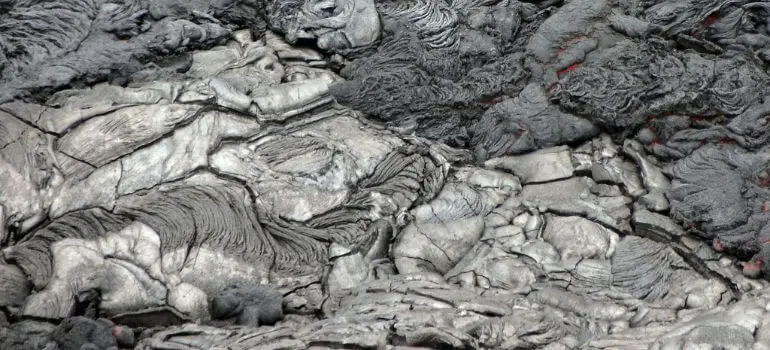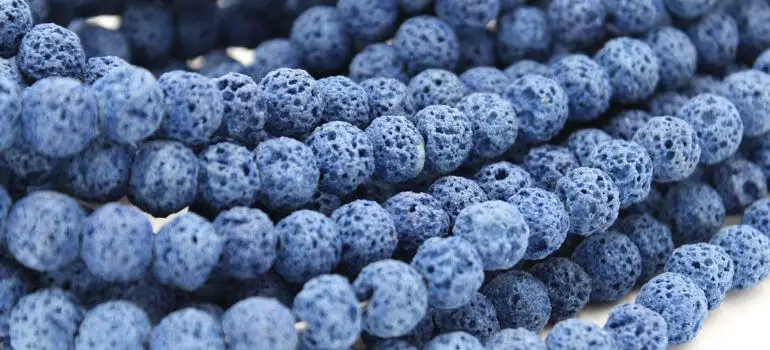Introduction
Have you ever wondered about the differences between pumice stone and lava rock? These two volcanic products are not just intriguing geologically, but they also play vital roles in various industries. Let’s dive deep and explore!
What is Pumice Stone?
Pumice stone, born from volcanic eruptions, is a lightweight, porous rock. It’s famed for its abrasive nature and floats on water! It’s widely used, from construction materials to beauty products.
What is Lava Rock?
Lava rock, also a volcanic product, is known for its rough texture and density. Unlike pumice, it’s heavy and often used in landscaping and as a natural filter.
Comparative Analysis: Pumice Stone vs. Lava Rock

Formation and Origin
- Pumice Stone: Pumice is formed when super-heated, highly pressurized rock is violently ejected from a volcano. The unusual foamy configuration of pumice happens because of simultaneous rapid cooling and rapid depressurization.
- Lava Rock: Also known as igneous rock, lava rock is formed from cooled and solidified lava. Unlike pumice, it does not contain air bubbles and is denser.
Physical Properties
- Pumice Stone: This rock is light in density, abrasive in texture, and typically light-colored. Its porous nature makes it float on water.
- Lava Rock: Lava rock is denser, heavier, and usually darker in color. It has a rough texture with a more solid, non-porous structure.
Chemical Composition
- Pumice Stone: Pumice is primarily composed of silica (SiO2) and traces of other oxides. Its high silica content contributes to its light weight.
- Lava Rock: Lava rock, while also silica-rich, can vary in composition depending on the source lava. It often contains a mix of additional minerals like iron, magnesium, and calcium.
Uses in Industry
- Pumice Stone:
- Skincare and Beauty: Used as an abrasive material for removing dead skin and in some toothpastes.
- Construction: Lightweight aggregate in concrete and cement manufacturing.
- Horticulture: Soil amendment for aeration and water retention.
- Lava Rock:
- Landscaping: Popular for its aesthetic appeal in gardens and pathways.
- Construction: Used as a natural filter and in gas barbecues.
- Aquariums: Acts as a natural filter and a decorative element.
Environmental Impact
- Pumice Stone: The mining of pumice is generally considered low-impact as it is a surface mining operation. The areas are easily rehabilitated.
- Lava Rock: The extraction of lava rock can be more disruptive to the environment, especially if the sourcing area is ecologically sensitive.
Durability and Maintenance
- Pumice Stone: It’s relatively durable but can break down over time, especially in high-traffic areas.
- Lava Rock: Known for its durability and low maintenance, lava rock can withstand harsh conditions and does not decompose easily.
Uses in Gardening
In your garden, pumice improves soil aeration, while lava rock is excellent for water retention. Both help plants thrive but in different ways.
Uses in Construction
In construction, pumice makes lightweight concrete blocks, whereas lava rock is often used for decorative purposes.
Beauty and Skincare

Pumice Stone in Beauty and Skincare:
- Exfoliation: Pumice stone is widely used as a natural exfoliant. Its abrasive surface effectively removes dead skin cells, promoting healthier and smoother skin. It’s especially popular for softening rough areas like feet and elbows.
- Skincare Products: Some skincare products incorporate fine pumice powder for gentle exfoliation. It’s an ingredient in certain facial scrubs and body washes, offering a mild abrasive quality.
- Safe and Natural: As a natural product, pumice is often preferred over synthetic exfoliants. It’s environmentally friendly and free from harmful chemicals, making it suitable for sensitive skin.
- Pore Cleansing: Pumice’s porous nature allows it to absorb excess oil and dirt from the skin, helping to unclog pores and reduce acne breakouts.
Lava Rock in Beauty and Skincare:
- Less Common in Skincare: Lava rock is not as widely used in skincare as pumice stone. However, its rich mineral content, including elements like magnesium and iron, can offer benefits to the skin.
- Lava Rock Beads: In some beauty products, small, smooth beads of lava rock are used for massage and relaxation therapies. These beads can retain heat and help soothe muscle tension when used in spa treatments.
- Detoxifying Properties: Lava rock is believed to have detoxifying effects. In some cultures, it’s used in baths and spa treatments to help remove toxins from the skin.
- Aromatherapy Uses: Lava rock beads are often used in aromatherapy bracelets or necklaces. Their porous nature can absorb and slowly release essential oils, providing therapeutic benefits throughout the day.
Environmental Impact
Environmental Impact of Pumice Stone:
- Low-Impact Mining: Pumice stone mining is generally considered to have a low environmental impact. This is because pumice mining is primarily a surface mining operation, meaning it doesn’t require extensive digging or drilling into the earth.
- Rehabilitation Potential: The areas where pumice is mined can often be rehabilitated relatively easily. After mining operations are completed, these areas can be restored to a natural state or used for agricultural purposes.
- Minimal Chemical Processing: The processing of pumice stone typically requires minimal chemical use, reducing the potential for environmental contamination.
- Sustainability Concerns: While pumice mining is less destructive, sustainability concerns do arise in areas where there’s over-mining or lack of regulation.
Environmental Impact of Lava Rock:
- Potential Habitat Disruption: The extraction of lava rock can sometimes disrupt local ecosystems, especially if the mining occurs in ecologically sensitive areas. This can lead to habitat loss for wildlife and changes in the landscape.
- Energy-Intensive Processing: The processing of lava rock can be more energy-intensive compared to pumice. It often requires crushing and sorting, which consumes more energy and resources.
- Transportation Impact: Lava rock is denser and heavier than pumice, which means it requires more energy for transportation. This can lead to a higher carbon footprint associated with its shipping and handling.
- Longevity and Reusability: On the positive side, the durability and reusability of lava rock in applications like landscaping and construction can mitigate some environmental impacts. Its long lifespan means less frequent replacement and reduced resource consumption over time.
Cost Comparison
Cost Factors for Pumice Stone:
- Availability and Abundance: Pumice stone is relatively abundant in certain volcanic regions, which often leads to lower costs. The ease of mining and processing pumice also contributes to its affordability.
- Transportation Costs: Due to its lightweight nature, transportation costs for pumice stone are generally lower compared to heavier materials. This factor significantly influences its final market price.
- Processing and Refinement: The cost of pumice stone can vary depending on the level of processing and refinement. Finer, more processed pumice, used in cosmetics or medical applications, can be more expensive.
- Regional Variations: The cost of pumice stone can vary regionally, depending on the proximity to the source. Areas closer to volcanic regions typically have lower prices.
Cost Factors for Lava Rock:
- Density and Weight: Lava rock is denser and heavier than pumice, resulting in higher transportation costs. This is a significant factor contributing to its overall cost, especially for international shipping.
- Extraction and Processing: The extraction process for lava rock can be more labor-intensive and energy-consuming, leading to higher production costs.
- Variability and Quality: The cost of lava rock can also depend on its quality and the specific type. Certain varieties of lava rock, prized for their aesthetic appeal in landscaping, can be more expensive.
- Market Demand: The demand for lava rock in landscaping and construction can influence its price. High demand in certain markets can drive up costs.
Overall Comparison:
- Pumice Stone: Generally more affordable due to its abundance, lower transportation costs, and simpler processing requirements.
- Lava Rock: Tends to be more expensive due to higher transportation and production costs, along with market demand factors.
Durability and Maintenance
In terms of longevity, lava rock wins, especially in outdoor applications. Pumice, while durable, requires more maintenance.
Cultural and Historical Significance
Both rocks have a rich history, used by ancient civilizations for various purposes, from construction to skincare.
Consumer Preferences
Recent trends show a rise in the use of pumice in eco-friendly products, while lava rock remains popular in landscaping.
Expert Opinions
Geologists and industry professionals provide insights into the sustainable use of these volcanic materials.
Innovative Uses
From water filtration to artistic sculptures, these rocks are constantly finding new applications in our modern world.
Conclusion
Pumice stone and lava rock, each with their unique characteristics, cater to different needs. Whether it’s for gardening, construction, or beauty, choosing the right one depends on your specific requirements.
FAQs
Pumice is great for aeration, while lava rock excels in water retention. The choice depends on your soil type.
Yes, pumice can be cleaned and reused, especially in beauty applications.
It’s great for xeriscaping but may be too heavy for rooftop gardens.
Recycled glass and certain biodegradable materials are emerging as alternatives.
Consider weight, insulation properties, and aesthetic preferences.



